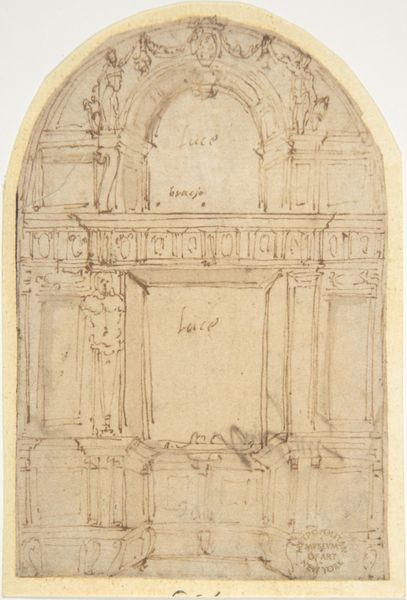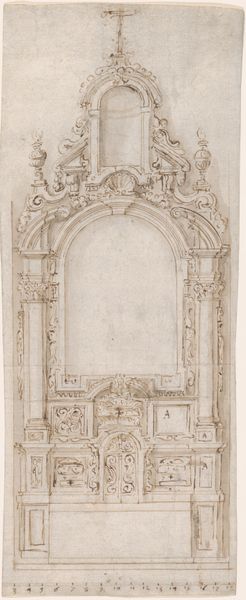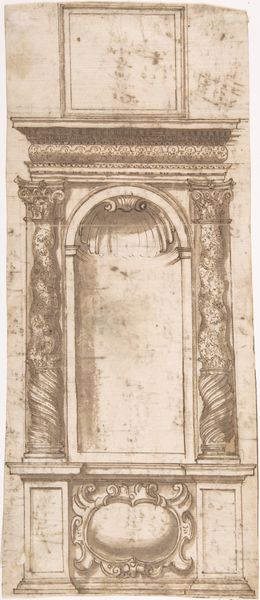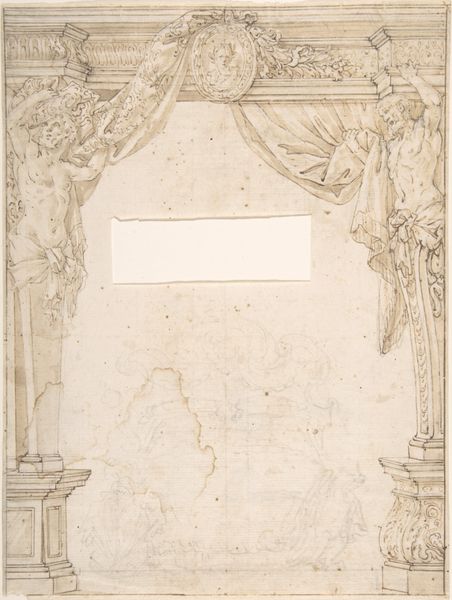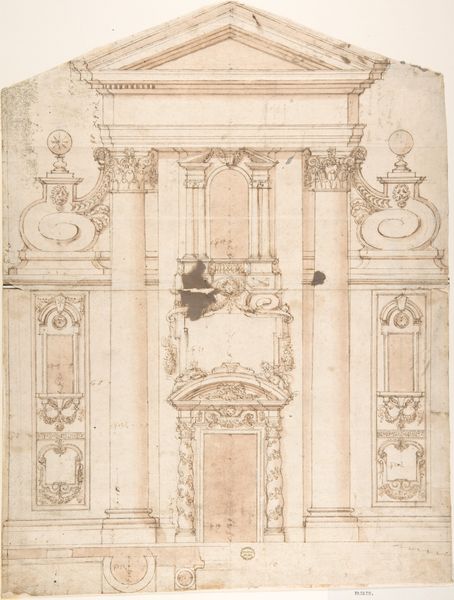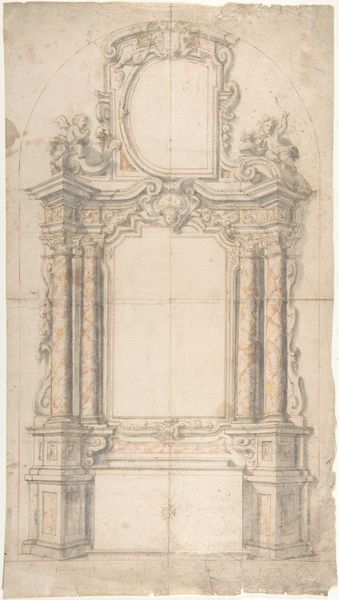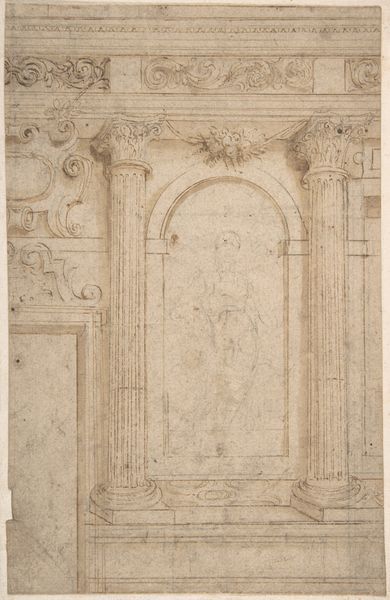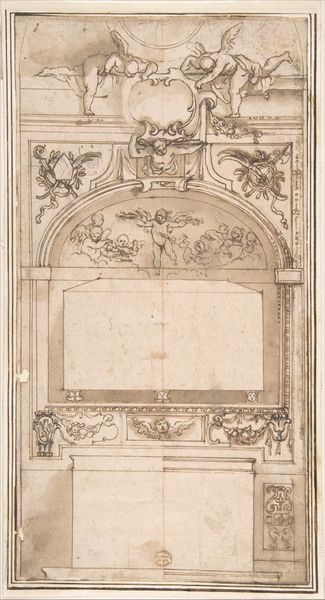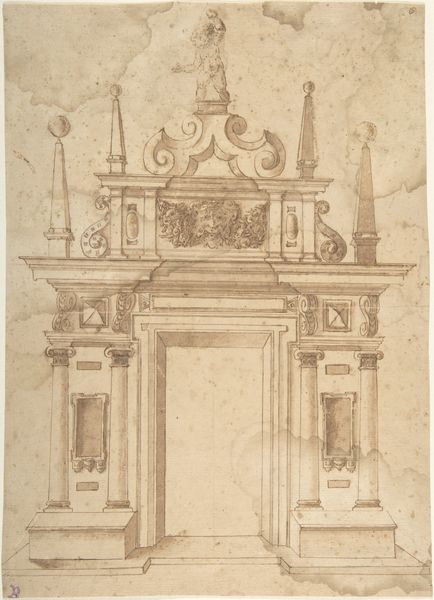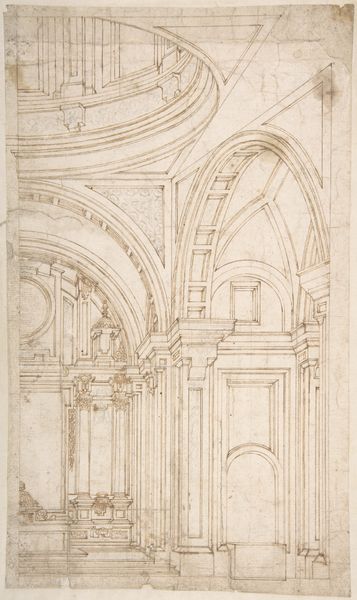
drawing, print, ink, pen, architecture
#
drawing
# print
#
charcoal drawing
#
11_renaissance
#
ink
#
geometric
#
line
#
pen
#
academic-art
#
italian-renaissance
#
watercolor
#
architecture
Dimensions: 5 x 3-3/4 in. (12.7 x 9.5 cm)
Copyright: Public Domain
Curator: Looking at this drawing, the immediate impression is one of subdued elegance. It’s so delicate, like a whispered promise of architectural grandeur. Editor: Indeed. This pen and ink study, "Design for Window," dates back to somewhere between 1500 and 1600. Its origins are, unfortunately, unknown, but it resides here with us at the Metropolitan Museum. I am immediately struck by the somewhat limited understanding we have about its original use and socio-political setting. Curator: But that's precisely what's so compelling! The anonymous authorship invites us to project our own interpretations onto its symbolic elements. That arched window, crowned by a heraldic crest—doesn't it evoke a sense of noble lineage? The light that would stream through, illuminating secrets and legacies? Editor: Well, I see more a society in transition, a dance between religious dogma and emerging humanism during the Renaissance. The drawing seems like a quiet manifesto, reflecting how sacred spaces transitioned into grander domestic ones. These shifts marked pivotal moments of social evolution. Curator: Consider the precise draftsmanship—each line carefully placed, each capital rendered with intent. What do these regular elements convey to our cultural memory about the aspiration to, and pursuit of, perfect, harmonic ratios within our psychological experience? Editor: And how this pursuit reflected prevailing patronage systems? I find it particularly insightful to view how such designs, although aesthetic, always navigated socio-economic realities. Someone paid for this. I’m interested in exploring just who commissioned and benefited from these designs. Curator: It’s undeniable, the blend of function and symbolic expression. The symmetry speaks to order and rational thought. However, at the same time, look at the spontaneity of some lines, suggesting the quick, generative movements of the artist's mind, which to me, brings us into closer proximity with the psyche of creativity and problem solving. Editor: Absolutely, a negotiation. On reflection, examining it as a tangible intersection of aesthetic vision, material culture, and social status broadens our understanding beyond mere artistry, doesn't it? It transforms into something infinitely more socially insightful. Curator: So, by connecting to the echoes of cultural history and artistic intent layered in the visuality of a "simple" window, perhaps it then functions as both artifact and symbol for us? Editor: Indeed, a dual narrative woven into a design that’s anything but simple when considered historically and culturally.
Comments
No comments
Be the first to comment and join the conversation on the ultimate creative platform.
